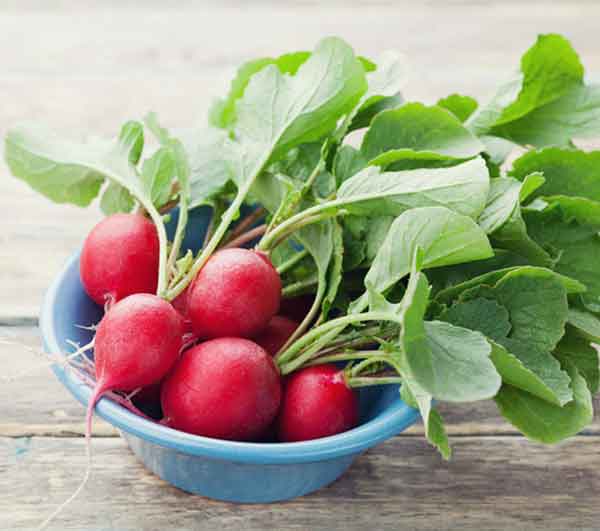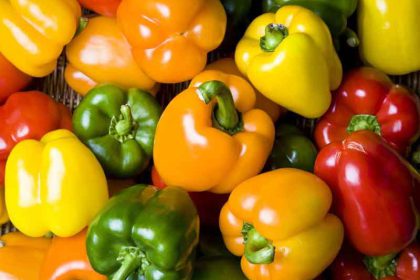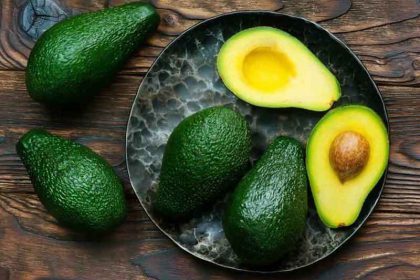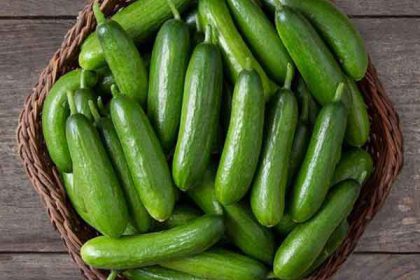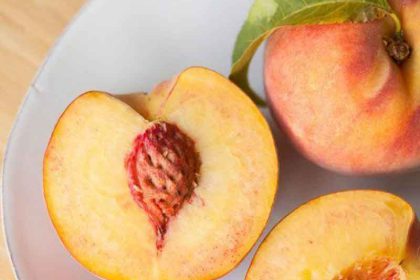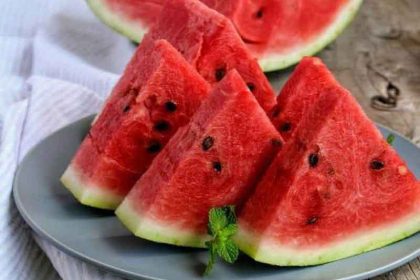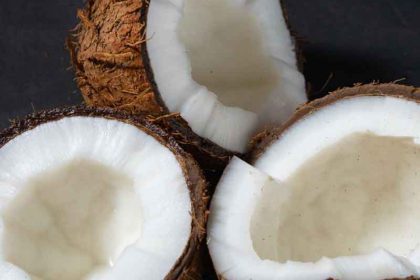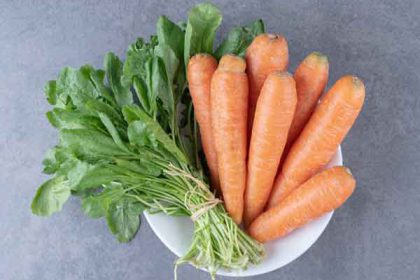Radish benefits for skin and stomach and weight loss
Radish benefits
Radish benefits for skin and stomach and weight loss On Nicholi site. We hope this article will be of interest to you.
Radish is a nutritious vegetable that offers several health benefits. It can reduce the risk of heart disease, prevent cancer, strengthen the immune system, protect against eye diseases, and slow down premature aging. However, excessive consumption of radish can have side effects such as increased blood pressure, gastrointestinal problems, microbial contamination, and allergic reactions. Radish is also beneficial for the skin, stomach, weight loss, and lung health. It can be prepared in various recipes, including juice, soup, cake, and salad. Eating radishes at night or on an empty stomach is generally safe, but moderation is advised. Radish allergy symptoms may include itching, gastrointestinal reactions, respiratory reactions, and, rarely, severe reactions like anaphylaxis. Radish may cause stomach pain if consumed in excess or by individuals with digestive issues. Asian and Indian cuisines offer a variety of radish recipes. Overall, radish is a versatile vegetable with numerous benefits and can be enjoyed as part of a healthy diet.
Radish health benefits
Radish is an extremely healthy and useful vegetable and has many benefits and benefits for our health. Below are some of the benefits:
Reduce the risk of heart disease: Consuming radish can help lower blood pressure, lower bad cholesterol levels, and increase good cholesterol in the body, which can reduce the risk of heart disease because of these properties.
Prevention of cancer diseases: Radish has large amounts of fiber that can prevent cancer cells from forming cancer nodes in the intestine.
Strengthening the immune system: Consuming radish can help increase white blood cell activity and strengthen the immune system.
Reduce the risk of eye diseases: Radish has a high amount of vitamin A that can help prevent eye diseases, such as diseases.
Prevention of premature aging: Radish contains a high amount of antioxidants that can help prevent damage to body cells and reduce free radical activity, which is related to premature aging.
Radish side effects
Radish is one of the widely consumed vegetables in West Asia and North Africa and has many properties for the health of the body any other food, radishes can have side effects. However, some people may have side effects due to allergies or specific illnesses. Increased blood pressure: Radish contains potassium and high consumption may increase blood pressure. Therefore, people who suffer from hypertension should be restricted to radish.
Gastrointestinal problems: Excessive radishes may cause gastrointestinal problems such as indigestion, diarrhea, or constipation. Also, some people may have gastrointestinal problems due to fiber sensitivity.
Microbial contamination: Like other vegetables, radishes can also be infected with germs. For this reason, it should be taken into consideration the correct washing methods.
Sensitivity: Some people may develop symptoms such as itching, swelling, or other symptoms due to sensitivity to radishes.
Some of the possible side effects of consuming radish include:
Gas and increased bowel sounds
Heartache and confusion
Inflammation of the digestive tract
Skin irritation and allergies in some people
Lower blood pressure in some people
Increased blood pressure in some people
Kidney disorders in some people
If you encounter any complications while consuming radish, it is better to go to your doctor and consult him about your condition.
Radish benefits for skin
Radish is a delicious green fruit that contains important nutrients such as vitamin C, beta-carotene, folate, and potassium. This fruit is very useful for the skin and can improve the condition of your skin for the following reasons:
Anti-inflammatory: Radishes contain flavonoids and other anti-inflammatory substances that can help reduce skin inflammation, which can improve skin conditions such as acne, age spots, psoriasis, and eczema.
Antioxidants: Radishes have high levels of vitamin C and beta-carotene, both of which are antioxidants and can help fight free radicals and skin aging.
Moisturizer: Radish contains a lot of water and its consumption can help moisturize the skin and improve the appearance of your skin.
Reduce dark spots: Radish contains vitamin C, which can help make your skin tone smoother and brighter and reduce dark spots.
Accelerate the healing of skin wounds: Radish contains vitamin C and zinc, which can help heal skin wounds and accelerate the regeneration of skin tissue.
Radish benefits for the stomach
Radish is a delicious and healthy fruit that can help improve the condition of the stomach. Radish contains anti-inflammatory substances that can help reduce inflammation in the stomach, which is useful in diseases such as gastric reflux, stomach ulcers, and gastric acid secretion. Radishes contain fiber that can help regulate digestion and reduce digestive problems such as constipation. Radish contains vitamin C and beta-carotene, both of which are antioxidants and can help reduce oxidative damage and protect stomach cells. Radish contains protective substances that can help prevent stomach ulcers, especially in patients with Helicobacter pylori infection. Radishes contain nutrients such as flavonoids, carotenoids, and phytochemicals, all of which can help reduce the risk of stomach cancer.
Radish benefits for weight loss
Radish is a fruit with high nutritional value and low calories that can help in losing weight and maintaining a healthy weight. Radish contains about 50 calories per 100 grams, which suggests that it can be useful in a low-calorie diet and weight loss. Radish contains high fiber that can improve the feeling of satiety and prevent overeating. Due to their high water content, radishes can be very useful for satiety and satisfying inappropriate food cravings. Radishes contain vitamin C, which can help maintain the health of body cells and the immune system. Radishes contain natural sweeteners that can help lower blood sugar levels and manage diabetes. Radishes contain immune-boosting nutrients like vitamin A; beta-carotene, vitamin B6, and potassium that can help improve overall health.
Radish benefits for the lungs
Radishes are an excellent source of nutrients that can help improve lung health. Radish contains strong antioxidants such as vitamin C, vitamin E, and carotenoids, which can help maintain lung health and prevent lung diseases. Radishes contain anti-inflammatory substances such as flavonoids that can help reduce lung inflammation. Radish contains vitamin D, which can help prevent lung diseases due to its positive effects on lung health. Radish contains lung-specific substances such as flavonoids and carotenoids, which can help improve lung function and maintain their health. Radishes contain potassium, which can help control blood pressure. High blood pressure can damage the lungs. Consuming radishes can help maintain overall health and healthy bodies because they contain immune nutrients such as vitamin A, vitamin C, and potassium.
Radish recipes
Radish is a fruit with very beneficial properties for health. Below is a recipe for cooking radishes: first wash the radishes carefully and then remove the roots and leaves. Then divide the radish into small parts and put it in boiling water and keep it in boiling water for a few minutes. Then take it out of the water. You can cook radishes in a variety of ways, including boiling, steaming, baking, or panning. It is usually better to cook radishes in water and steam them to preserve their flavor and nutrients. After cooking, add radish with various spices, salt, and pepper to your taste and serve. When cooking radishes, be careful not to overcook or add too much sweetness, as this may rob the radish of its nutrients.
Eating radishes at night
Consuming radishes at night, like any other vegetable, is completely safe and healthy for our bodies. However, some people may experience certain problems if they consume it at night. In general, eating at night can be harmful to the body, especially if it is consumed intensively and in large quantities. Eating food at night can cause various stomach and digestive system problems, and in some people, it also causes weight gain and obesity. As for radish, although it is not a problem to consume it at night by itself, it is better to avoid consuming large amounts of it at night. Also, it is better to have at least 2-3 hours between meals and sleep before going to bed and avoid heavy food at night.
How to make radish juice for weight loss
Radish juice is one of the delicious and healthy drinks for weight loss. To prepare it, follow the steps below. Ingredients:
A radish
A lemon
Two tablespoons of sugar (you can use a natural sweetener such as honey instead of sugar)
Frozen water
Water
How to prepare:
Wash and dry the radish. Then cut its top and bottom and cut it in half. Put half a radish with two tablespoons of sugar on a plate. Cut a lemon in half and add its jam to the radish plate. Add enough water to the radish plate and mix all the ingredients together. Add the frozen water to the radish plate in an appropriate amount and mix again. Serve the radish juice. Radish juice is suitable for weight loss because it contains low-calorie nutrients and high fiber. However, to obtain better results, it is recommended to take it with half an hour of exercise and a proper diet.
Eating radishes empty stomach
Consuming radishes on an empty stomach, like any other vegetables and fruits, is generally not harmful to the body. However, it may cause various complications in some people. In some cases, eating radishes on an empty stomach can make you feel overly full and therefore you may have more appetite throughout the day and consume more calories, which may directly lead to weight gain. Also, some people may face stomach and digestive problems such as indigestion, stomach irritation, and diarrhea. So, although it is not harmful to eat radish on an empty stomach, it is better to avoid eating it on an empty stomach and consume it as one of your snacks to avoid digestive problems and also has better weight control.
How much radish is too much?
Radishes, like other vegetables and fruits, are a good source of vitamins, minerals, and fiber and are useful as part of a healthy diet. However, consuming too much radish, like any other food, can cause problems for some people. As for the amount of radish, there is no specific amount that says too much or too little. Radish intake should be determined based on your personal nutrient and fiber needs, age, gender, physical activity, and other factors. In general, daily consumption of about 3 to 4 cups of fresh radishes per day can be suitable for an adult. But this amount can be different depending on the individual conditions of each person. Also, if you are looking to lose weight, consuming radish alone is not enough and should be done along with a healthy diet and regular physical activity.
Radish allergy symptoms
Radish allergy can occur in some people and can show symptoms similar to other food allergies. Radish allergy symptoms include:
Itching and redness of the skin: These symptoms may appear in your mouth, lips, throat, and even your scalp and face.
Gastrointestinal reactions: symptoms such as indigestion, oral fever, abdominal pain, diarrhea, nausea, and vomiting may occur in people sensitive to radish.
Respiratory reactions: symptoms such as cough, runny nose, sneezing, dry throat, and in some cases asthma may also show.
In very rare cases, severe reactions such as anaphylaxis (a dangerous disease associated with body swelling, coughing, low blood pressure, and asthma) may also occur in some people to radish.
If you are at risk of radish allergy, it is better to consult your doctor and does an allergy test if needed. Also, if you experience symptoms similar to radish allergy, it is better to avoid consuming it.
Radish stomach pain
Radish is one of the fruits that, if consumed in excess, may cause stomach pain in people with digestive problems. In addition, radishes may contain digestive acids that irritate the stomach wall and cause pain and indigestion. Additionally, radishes are high in fiber, which, if consumed in excess, may act as a strong stimulant to the digestive system and cause stomach aches. If you have stomach pain after consuming radish, it is better to consume less of it, and if you experience stomach pain after consuming radish again, it is better to consult your doctor. Also, if you have digestive problems such as peptic ulcers, it is better to avoid using radish.
Asian radish recipes
Asian radish or sweet pumpkin is a delicious and healthy fruit that can be consumed fresh or in various dishes and desserts. Below are some recipes for using Asian radish:
Radish juice: To prepare radish juice, chop the radish and put it on a large plate with water. Then mix it using a good blender for a few minutes. After all the ingredients are well mixed, pour the radish juice through a strainer with small springs and then sweeten it with a spoonful of sugar to your desired taste.
Radish soup: To prepare radish soup, mix radishes with various vegetables such as onion, garlic, and edible greens and cook with hot water for 30 minutes. Then pour the ingredients through a sieve with small springs and serve by adding salt and pepper to your desired taste.
Radish cake: To prepare radish cake, chop radish and mix it with different ingredients such as flour, milk, eggs, and sugar. Then pour the ingredients into the cake mold and bake in the oven at 350 degrees Fahrenheit for 40 to 45 minutes. After baking, remove the cake from the oven and spread it with a layer of chocolate.
Radish dessert: To prepare radish dessert, chop the radish and mix it with milk, sugar, vanilla, and egg and cook in the pot for 10 to 15 minutes. Then remove it from the heat and let it cool. Once cooled, serve the dessert in bowls and garnish with garnishes such as strawberries and pistachios.
Radish pizza: To prepare radish pizza, spread the pizza bread with tomato paste and cheese balls on it. Then put radish, mushroom, bell pepper, and onion on it. After adding the toppings, bake the pizza in a 425°F oven for 12 to 15 minutes and serve.
Radish salad: To prepare radish salad, cut radish into half circles and mix them with different vegetables such as basil, lettuce, and fresh onion. Then serve it by adding ingredients such as olive oil, balsamic vinegar, and salt and pepper to your liking.
Indian radish recipes
Below is the recipe for one of the popular Indian radish dishes: Ingredients:
1 chopped onion
1 tablespoon of chopped ginger and garlic
1 tablespoon of red pepper powder
1 teaspoon of ambush
1/2 teaspoon gram masala
1/2 kilo of cleaned and chopped radish
2 tablespoons of olive oil
2 tablespoons of butter
Salt as needed
How to prepare:
Heat olive oil and butter in a large pot or pan over medium heat. Fry the onion for 5 to 7 minutes until light. Add chopped ginger and garlic to the onion and fry for another 1 minute. Add red chili powder, cumin, gram masala, and salt to the pot and fry for another 1 minute. Add the radish to the pot and heat it by sautéing for 2 minutes. Reduce the heat and cover the pot with a tight lid and cook it for 20 to 25 minutes until the radish is soft and prepare your meal. Serve the Indian radish meal with fresh bread or white rice. Radish food is a food rich in nutrients and is very popular because of its wonderful taste.
Easy radish recipes
Below is a simple and quick recipe for easy radish:
Ingredients:
1 medium-sized radish
1 tablespoon of olive oil
Salt and pepper as needed
How to prepare:
Wash the radish and cut it in half and remove the seeds with a spoon. Cut the radish into small pieces. Heat the olive oil in a medium pan. Add the radish to the pan and fry for a few minutes on medium heat until it softens a little. Add salt and pepper as required and cook it on low heat for another 10 minutes until it is completely soft. Serve the radish dish with fresh bread or with a salad. This simple dish of radish has a great taste and can be used as a quick and simple dish in meals.
Radish dinner recipes
Radish is one of the most popular foods in spring and can be used as one of the main ingredients in dinner and lunch dishes. Below are some recipes for radish dinner dishes:
Radish pasta
Ingredients:
400 grams of radish
400 grams of pasta
2 pieces of chopped garlic
3 tablespoons of olive oil
Salt and pepper as needed
Grated parmesan to serve
How to prepare:
Cook the pasta according to the instructions and drain. Wash the radish and cut it in half and remove the seeds with a spoon. Then chop it into small pieces. Heat the olive oil in a pan and add the garlic and fry until the garlic turns golden. Add the radish to the pan and fry for 5-7 minutes on medium heat until it softens a little. Add salt and pepper as needed and mix it with the pasta. Serve with grated parmesan.
Radish dish with wheat semolina:
Ingredients:
1 cup of wheat semolina
2 cups of water
1 chopped onion
2 chopped tomatoes
1 chopped bell pepper
1 chopped radish
1 tablespoon of olive oil
Salt and pepper as needed
Wash wheat semolina and boil it in boiling water for 30 minutes. Wash and peel the radish, then grate it. Chop the onion and fry in olive oil until golden. Add the grated radish to the onion and fry for 10 minutes. Remove the bulgur from the heat and drain the water. Add the bulgur to the radish and onion mixture and fry for 5 minutes. Add water to the food and boil for 15 minutes until the food is ready. Add salt, pepper, and saffron as needed and mix. Radish with wheat semolina is ready. Serve it with fresh bread.
Radish stew:
Ingredients:
500 grams of minced meat
2 chopped onions
1 chopped garlic
1/2 teaspoon of grated ginger
1/2 teaspoon of turmeric
1/2 teaspoon of black pepper
1/2 teaspoon of cinnamon
500 grams of chopped radish
1/2 cup of tomato paste
2 chopped tomatoes
2 cups of water or chicken broth
Salt as needed
Olive oil as needed
How to prepare:
Saute onion and garlic in olive oil until soft. Add minced meat to onion and garlic and fry until it changes color. Add ginger, turmeric, black pepper, and cinnamon to the stew ingredients and fry together for a few minutes. Add radish, tomato paste, tomatoes, and water or chicken to the stew ingredients and adjust with salt to the required amount. Put the stew on low heat and let it boil for 30 to 40 minutes until the ingredients are completely cooked. Serve the prepared dish with white rice.
Raw radish recipes
Raw radish can be used as a salad, seasoning, and puree or with other foods. Here are some recipes for preparing raw radish:
Radish salad:
Ingredients:
Radish: 1 pc
Tomatoes: 2 pcs
Cucumber: 1 pc
Onion: 1 pc
Saffron: as much as necessary
Salt and pepper: as needed
Olive oil: 2 tablespoons
Lemon juice: as much as needed
How to prepare:
Chop radish, tomato, and cucumber and mix in a container. Chop the onion and add it to the dish. Add saffron, salt, and pepper to the required amount and mix. Add olive oil and lemon juice as desired to the salad and mix. The radish salad is ready. Serve it with fresh bread. Radish and chickpea salad is one of the delicious and nutritious salads that you can easily prepare at home. The recipe for this salad is as follows:
Ingredients:
A cup of raw radish peeled and chopped
A cup of chickpeas, cooked and drained
A cucumber, chopped
A small onion, chopped
A tablespoon of olive oil
A tablespoon of citric acid
Salt and pepper as needed
How to prepare:
Mix all the ingredients in a bowl. Add olive oil, lemon acid, salt, and pepper to the ingredients and mix everything together. Put the salad on a plate and decorate it. The combination of the taste of vegetables, peas, and radishes in this salad enriches it with fiber, protein, and various vitamins. This salad can be served as an appetizer, snack, or side dish.
Radish soup recipes
Radish soup is a healthy and delicious dish that you can easily prepare at home. The recipe for radish soup is as follows:
Ingredients:
A cup of raw radish peeled and chopped
A small onion, chopped
Two cloves of garlic, chopped
A medium potato, chopped
Two tablespoons of olive oil
A few fresh pepper leaves, chopped
A few sprigs of fresh basil, chopped
Salt and pepper as needed
A few cups of water or chicken broth
How to prepare:
In a pot, put the olive oil on low heat and fry the onion and garlic until they turn golden. Add radish, potato, pepper, salt, and pepper to the pot and mix together. Add water to the pot and put the ingredients on high heat to boil. Reduce the heat and simmer the soup for 15 to 20 minutes until the radish and potato are soft. Finally, add the basil to the soup and simmer for another 2-3 minutes. Remove the soup from the heat and you can puree it with a blender. Top the soup with a combination of fresh basil and toasted bread. This soup with the sweet taste of radish and the delicious taste of garlic and basil is the best type of healthy food.
Kid-friendly radish recipes
To prepare radish for children, you can do as follows:
Prepare radish:
Choose a radish that is green, healthy, and unblemished. Wash it with cold water and dry it. Cut the leaves attached to the radish.
Radish cooking:
Cut the radish in two halves and sprinkle with a few drops of olive oil, salt, and black pepper. Put it in the oven and bake it at 200 degrees Celsius. Keep the radish in the oven until it becomes soft and golden.
To serve radish:
Remove the radish from the oven and place on a large plate. Sprinkle with olive oil, salt, and black pepper. If you want, you can sprinkle grated Parmesan cheese, fresh basil, or a few drops of lemon juice on the radish.
Final points:
Cool the radish for at least 5 minutes before eating. You can use a few pieces of toast to serve radish. It is better for children not to eat radish alone and to accompany it with other foods such as salad, chicken, or fish.
Is radish good for liver cirrhosis?
In some studies, radish has shown useful substances such as fiber, vitamin C, and calcium that may help liver health. Also, radish has antioxidants such as beta-carotene that can help reduce liver inflammation. But it should be noted that cirrhosis is a serious disease and should be treated with medical advice. For this reason, you should consult your doctor before eating any food and follow their recommendations.
How many radishes per day
Consuming a good amount of radish for each person depends on factors such as age, gender, physical activity, and health. However, the average radish consumption for adults is limited to 2 to 3 cups per day. Given that radish has a high fiber, it may exacerbate it in people with gastrointestinal problems such as indigestion or constipation. For these people, it is advisable to consult their physician about the number of radishes.
Radish benefits for male
Radish has many benefits for people’s health and can be beneficial for men as a healthy and beneficial diet. Some of the benefits of radishes for men are:
Reduce the risk of heart disease: Radish is fiber, potassium, vitamin C, and antioxidants such as beta-carotene that can help reduce the risk of heart disease.
Bone Health Conservation: Radish contains calcium and vitamin K that can help maintain bone health.
Weight Control Helping: Radish has a high fiber that can increase the feeling of satiety and be useful in weight control.
Improving Mental Health: Eating radishes may improve one’s mental condition and make the person feel good.
Radish for skin whitening
Radish contains vitamin C and antioxidants such as beta-carotene that may help improve skin health. Some people believe that eating radishes can cause whitening, but it has no scientific claim and is not confirmed. For skin health, it is best to consider using sunscreen, regular exercise, and sleep, in addition to eating radishes, a healthy diet and maintaining skin moisture.
Radish juice benefits for skin
Radish juice has soothing, anti-inflammatory, and antiseptic properties and may be beneficial for improving skin health. It should be noted that in addition to consuming radish juice, maintaining skin moisture, using sunscreen products, regular exercise and enough sleep is also very important to improve skin health. Some of the benefits of radish juice for the skin are:
Skin relaxation: Radish juice has soothing and cooling properties and may soothe and relieve dryness and irritation of the skin.
Anti-inflammatory: The anti-inflammatory properties of radish juice can help reduce skin inflammation and be useful for sensitive or prone skin.
Antiseptic: The antiseptic properties of radish juice can help control the growth of bacteria and infected skin tissue.
Restorative: Radish juice can help heal skin wounds and improve skin healing.
Radish skin allergy
Radishes are generally a healthy food with high nutritional value and are safe for most people. But some people may be allergic to radish. Symptoms of skin allergy to radish may include itching, redness, swelling, and irritation of the skin. If these symptoms occur, it is better to stop using radish and consult your doctor. In severe cases, treatment with anti-allergic drugs may be required.

